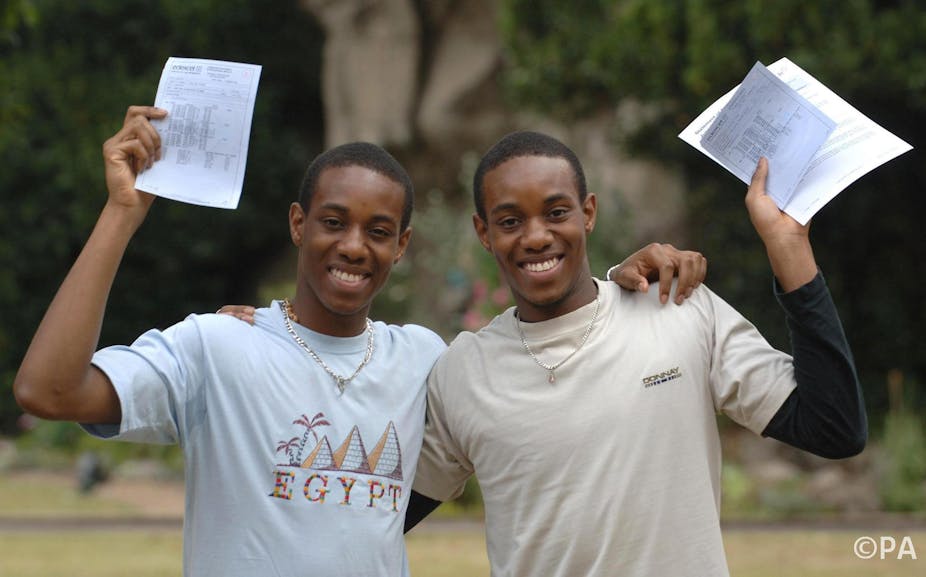There is a common misconception that genes are deterministic and that human potential is fixed at birth. This could not be further from the truth. We, as behavioural geneticists, see no evidence whatsoever for genetic determinism in how, what and why children learn.
In the recent debate about genetics and education, and whether those two words even belong in the same sentence, the influence of a child’s “non-shared environment” has largely been overlooked.
To elaborate, if you cloned one child 30 times and sent them into the same class at the same school with the same teacher, the chances are you would see 30 outcomes, all at least slightly different from each other.
We see this in cloned animal litters and in identical twins. The question that behavioural geneticists ask is why. How it is possible for genetically identical organisms to develop differently? And we try to find an answer by looking at experiences which differ between identical twins.
The same, but different
Identical twins share all of their genes and usually their home and upbringing too, making them – in theory at least – genetic and environmental clones of each other. And yet, with a little practice, the merest acquaintance can tell identical twins apart and their parents can usually do so from infancy.
Why? Because, although they are much more similar than other people, identical twins are never entirely identical. They differ in a whole range of ways, both physical and behavioural – and those differences have to be caused by differences in their experience because they’re not caused by differences in their genes.
During the last year we have spent many hours interviewing 16 to 19-year-old identical twin pairs and their parents in a study funded by the Nuffield Foundation.
In the course of our research we have spoken to families in which one twin – just one – is gay, or autistic, or dyslexic, or depressed, or highly motivated, or musically talented. The same descriptions or diagnoses did not apply to their twins despite the shared genes and the shared upbringing.
More prosaically we have spoken to pairs in which one twin achieved an A in GCSE Maths but the other a C; one planned to go to university but the other to drop out of school; and one twin went through school in top sets for everything, while their twin was educated in middle or even bottom sets.
The nurture trump card
These examples illustrate the point that when we talk about identical twins we are talking about individuals. Because their inherited DNA is identical, their different outcomes have to be caused by differences in their experience, known as non-shared environmental influences, or NSE.

Understanding these differences in experience has the potential to clarify one of the ways in which nurture takes its effect on us all.
Over the years we have tried to identify non-shared environmental experiences that can explain differences between children, independently of their genes. So far we have had only a small degree of success.
We reason that if we can identify experiences which explain differences between young people on the cusp of leaving school, regardless of their genes, then we might be able to suggest new ways of using the educational environment to support achievement, well-being and decision making at this transitional time.
This is particularly important when the compulsory school leaving age is being raised, from 16 in 2012 to 18 by 2015, potentially creating a situation in which a substantial body of young people who have perhaps not thrived in school are forced to stay there even longer. We need to ensure that the educational environment on offer is one that provides a genuinely useful stepping stone to their future. Our hope is that research with identical twins can help us to do that.
After a year of listening to families’ stories and hypotheses we have now begun to analyse our data. We’re looking for patterns that seem to matter to maths achievement, or to good mental health, or to coming up with a constructive plan for the future.
An early and informal look at the data suggests that setting and streaming, a successful transition from primary school to secondary school, teacher-pupil relationships, socialising (real and virtual) and bullying are all experiences that may exert some influence on young people independently of their genes.
If we can identify or develop strong measures of experiences like these and show that identical twins show no more similarity than non-identical twins, we will know that we have pinned down truly environmental influences which can explain at least some of the differences between young people.
These areas of experience may represent particularly fruitful avenues for intervention and allocation of resources, because their effects are likely to be more straightforward than those which are more tightly intertwined with genes.
There’s no doubt that NSE is just one piece in the nature-nurture puzzle, but we think it’s an important one with the potential to yield practical applications sooner rather than later. The fact that identical twins differ is just one way of proving that genes are not deterministic. Research into the experiences that make them differ is evidence that, despite assumptions to the contrary, behavioural geneticists are nurture researchers.

